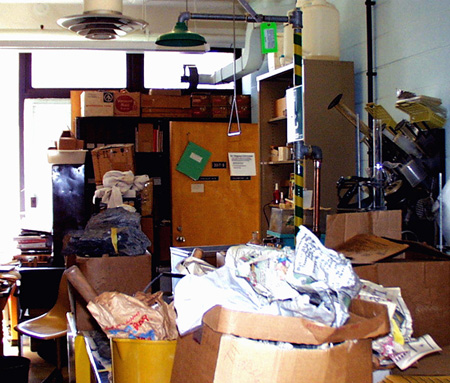Testing Times Ahead For Decontamination Solutions
Working in hazardous environments Health & Safety standards include the requirement to install an effective drenching device whether this is for the eye, face or whole body

Find The Emergency Shower!Janet Dickinson, operations manager for Showers & Eyebaths Services, discusses best practice when it comes to maintenance of this vital piece of equipment.
“When it comes to the safety of personnel, just installing a piece of emergency equipment is not enough. Testing for continual operation and functionality of safety showers out in the field or on site is vital. It takes just once for testing to be overlooked and workers lives can be put in danger. But also educating those who may need to use them is just as important.
“There is a requirement to ensure that safety eyewashes and showers supply clean, potable water and are in proper working order and it must be made clear who is responsible for carrying out inspection, testing and maintenance.”
“As for the personnel, do they know where the emergency facilities are located? For example, if working outside, it can be time critical that they are aware that a facility is actually available out on-site rather than thinking they have to run to a main building. This also reduces any further spread of the contamination. And of course they also need to be trained in how to use the emergency facility.
“Personnel also need to be fully briefed on the potential danger of the hazards within which they are working or working with? For example, those in close contact with chemicals and biological hazards need to know and understand exposure limits and what to do when it comes to decontaminating clothing and the body.
“When it comes to the siting of emergency eyewash and shower units facilities they must be installed in work areas where there is high potential for accidents involving corrosive, irritant or toxic substance absorption through skin and eyes. The area also needs to be well lit area with clear signage.
“And finally, every second counts. The location should be no more than a maximum of 10 seconds travel time for an injured person to access. This is approximately 17 meters. Therefore, there should be nothing to obstruct the pathways leading up to an emergency shower or items stored on top of an eyewash sink. However, where operatives are working with extremely hazardous materials an emergency facility needs to be installed immediately adjacent to where they are working.
“There must also be a tagging process put in place whereby workers themselves can check that an emergency shower has been properly tested and report anything they believe to be unsafe.”
TESTING EXISTING FACILITIES
Weekly Flush Test
• check that all units are in operational condition
• clear sedimentation that could clog the water supply line
• flush stagnate water from the plumbed fixtures which reduces the chance of microbial hazards
• document test with dates and initials on unit tag. Facilities managers are responsible to ensure an appropriate tag is on all units.
Monthly Test and Inspection
• Visual inspection of the unit. Look for leaks or pipe damage and proper placement of protective covers. This should be done prior to testing in order to avoid further damage to the unit and risk of injury to users. Ensure that the unit is free of any obstructions.
• Activate unit. Ensure that the water flow is continuous, evaluate that the unit can maintain flow for 15 minutes, and is not injurious to the user's eye or face. Valve actuators must activate water flow in one second or less and controlled flow of flushing fluid must be provided to both eyes simultaneously.
• Sanitize water supply through monthly flushing. In order to relieve the unit of any rust and other pipe build-up, flush the unit until the water runs clear.
• Document test with dates and initials on unit tag.
Annual Inspection
• Visual inspection of the unit. Look for leaks or pipe damage and proper placement of protective covers. This should be done prior to testing in order to avoid further damage to the unit and risk of injury to users.
• Ensure that the unit is free of any obstructions.
• Empty water completely from the safety shower header tanks and internally clean inside to remove any build up of algae.
• Ensure all directional signage is still in place and clearly visible.
• Inspect all electrics to ensure they are fully operational.
• Document test with dates and initials on unit tag.
CONTACT
Janet Dickinson
Showers & Eyebath Services Ltd
sales@safety-showers.com
www.safety-showers.com
+44 (0) 1744 889677
Monday 30 July 2012 / file under Petrochemical | Environmental | Chemical


